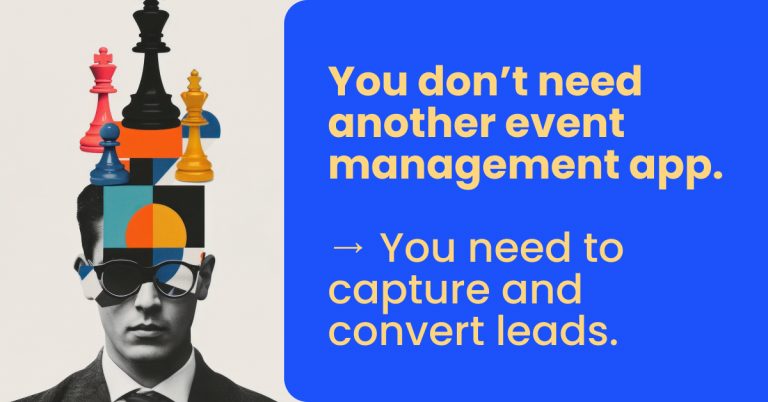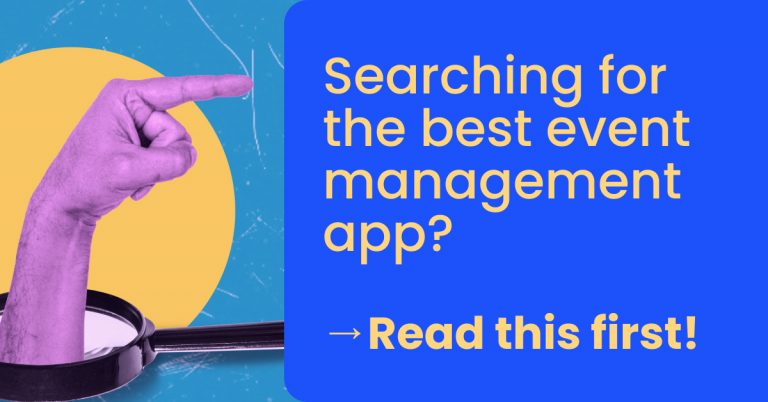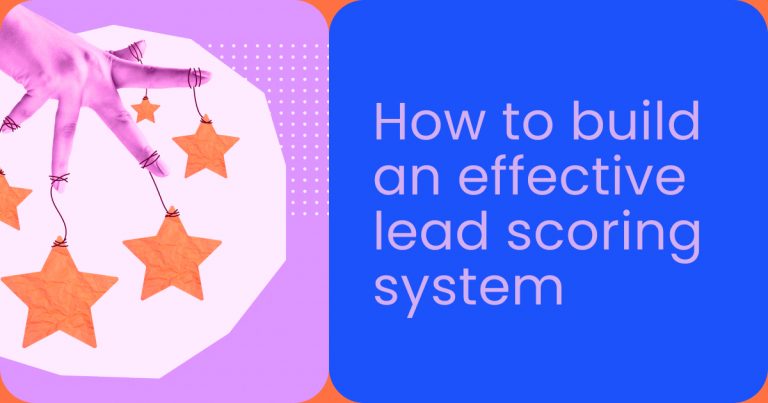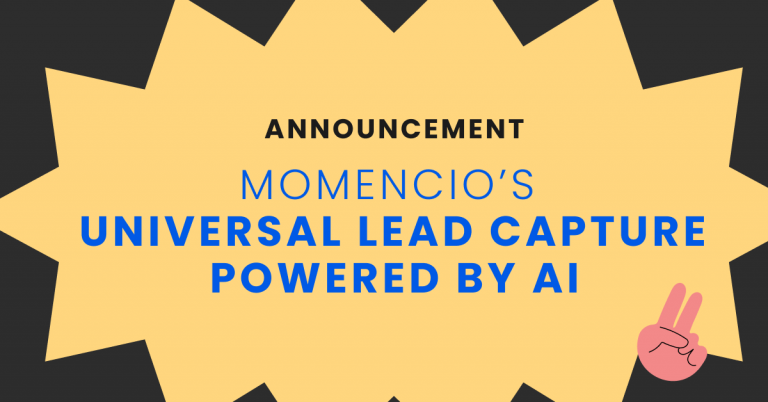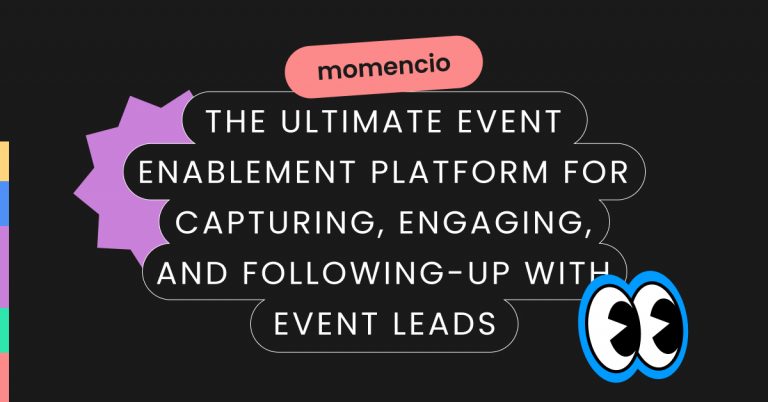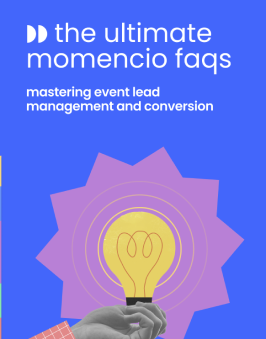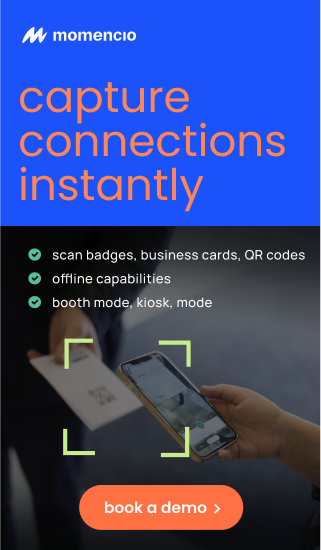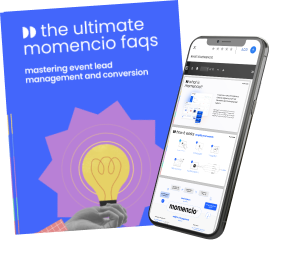Every lead captured at an event is an opportunity to fuel business growth. Yet, despite its significance, many organizations fail to fully leverage lead tracking, leaving untapped potential on the table. A resent research reveals that 60% of event marketers prioritize ROI as their key performance metric, emphasizing the critical need to measure and maximize returns from event investments.
Lead tracking bridges the gap between event engagement and measurable business outcomes, providing actionable insights that drive strategy. By implementing effective lead tracking, businesses can achieve up to a 20% increase in conversion rates. This process isn’t just about collecting attendee data; it’s about interpreting that data to enhance post-event strategies and secure a competitive edge.
In this article, we will uncover why lead tracking is pivotal for event ROI measurement, explore its benefits, and provide actionable strategies for success. You’ll learn how to integrate analytics, overcome challenges, and turn every lead into a revenue-driving opportunity. Whether you’re an event marketer, sales leader, or planner, this guide is your roadmap to maximizing ROI through smarter lead management.
The importance of lead tracking in maximizing event ROI
When it comes to event marketing, lead tracking isn’t just a nice-to-have—it’s a strategic necessity. Events are among the most resource-intensive marketing activities, with companies spending an average of $1,300 per attendee at B2B events. Without robust lead tracking, these investments can yield little more than surface-level metrics, such as attendance numbers, rather than actionable insights.
Why lead tracking matters
Lead tracking allows marketers to measure the effectiveness of their event strategies by connecting attendee interactions with sales outcomes. It answers critical questions, such as:
- How many attendees engaged with your booth or presentation?
- Which leads are most likely to convert based on their behavior?
- What revenue impact can be attributed to event participation?
By capturing and analyzing this data, businesses can directly link event efforts to bottom-line results, making it easier to justify investments to stakeholders.
Challenges without lead tracking
Organizations that overlook lead tracking often face challenges such as:
- Missed opportunities: Without clear tracking, high-potential leads can slip through the cracks, especially when follow-ups are delayed.
- Fragmented data: Using disjointed tools results in incomplete insights, making it difficult to gauge ROI.
- Inefficient resource allocation: Without knowing which strategies drive conversions, marketers waste time and budget on ineffective tactics.
Key advantages of lead tracking for event ROI
- Prioritization of high-value leads: With lead scoring, marketers can focus on prospects most likely to convert. Businesses that use lead scoring experience a 30% increase in sales efficiency.
- Real-time data insights: Tools like real-time analytics provide instant feedback, enabling marketers to make on-the-spot adjustments for greater impact.
- Enhanced stakeholder reporting: Clear metrics from lead tracking simplify ROI reporting, making it easier to communicate success to executives and investors.
Benefits of real-time lead tracking for event marketers
Real-time lead tracking is revolutionizing the way marketers measure and maximize event success. By offering immediate insights into attendee engagement, real-time tracking empowers event teams to act quickly, prioritize resources, and optimize strategies.
Key benefits of real-time lead tracking
- Instant decision-making
Real-time data equips marketers with the ability to make informed decisions on the spot. For example, if a product demo attracts high traffic, the team can allocate more resources, such as additional staff or promotional materials, to capitalize on the interest. Companies using real-time analytics report 35% faster decision-making processes compared to those relying on post-event data.
- Improved attendee experience
With live data, event teams can identify touchpoints that engage attendees most effectively. This allows for on-the-fly adjustments, such as tailoring booth interactions or modifying session topics to match audience interests. A more personalized experience leads to higher attendee satisfaction and brand recall.
- Efficient resource allocation
Real-time insights help marketers identify underperforming activities during the event. For instance, if a breakout session shows low attendance, organizers can promote it through on-site notifications or adjust the schedule to improve turnout.
- Lead prioritization in real time
One of the most powerful aspects of real-time tracking is lead scoring. Tools that track behaviors like booth visits, content downloads, or survey responses allow sales teams to prioritize leads with the highest potential. Businesses that use lead scoring are 192% more likely to convert leads into opportunities.
Integrating real-time tracking tools
To harness these benefits, marketers should invest in platforms that provide:
- Mobile app integration: Allows on-site staff to capture leads seamlessly via badge scanning or manual entry.
- CRM synchronization: Automatically syncs captured data with sales systems for streamlined follow-ups.
- Customizable dashboards: Offers a live view of metrics like booth traffic, lead engagement, and session attendance.
A practical example of success
Consider an event marketer for a software company using a real-time lead tracking tool. During a conference, they notice a high concentration of interest in their AI-powered solutions based on attendees’ survey responses. Armed with this insight, the marketing team adjusts their pitch for the keynote presentation to emphasize AI use cases, resulting in increased booth visits and demo sign-ups.
The competitive edge
Marketers who embrace real-time tracking gain a significant edge over competitors. While traditional methods rely on post-event analysis, real-time tracking enables proactive engagement, ensuring every opportunity is maximized.
How to use event analytics to evaluate lead engagement
Event analytics transforms raw data into actionable insights, allowing marketers to assess attendee behavior, measure engagement, and refine their strategies. By leveraging analytics, organizations can turn events into data-rich opportunities for driving revenue growth.
Key steps to evaluate lead engagement using event analytics
- Track critical engagement metrics
Event analytics tools capture key metrics that reveal attendee interactions, such as:
- Booth visits: Tracks the number of visitors and dwell time at your booth.
- Session attendance: Measures participation in presentations and workshops.
- Content interaction: Monitors downloads of materials, such as brochures or whitepapers.
- Post-event follow-up responses: Analyzes engagement with follow-up emails or calls.
These metrics provide a clear picture of what resonated with attendees and where adjustments may be needed.
- Segment leads by behavior
Not all leads are created equal, and event analytics helps identify those with the highest potential. For example:
- Leads who visited multiple sessions or spent significant time at the booth can be flagged as high-intent prospects.
- Attendees who engaged with specific product demos or downloaded certain content can be segmented for tailored follow-up campaigns.
This approach ensures marketing and sales teams focus their efforts on leads most likely to convert.
- Use visual dashboards for quick analysis
Modern event analytics platforms offer dashboards that visualize data in real time. These tools make it easier for event teams to identify trends and make data-driven decisions, such as which content to promote more heavily or which attendees to prioritize for immediate follow-ups.
Tools and technologies for lead engagement analytics
To implement robust analytics, businesses should consider tools that integrate seamlessly with their event management systems, such as:
- CRM platforms: For tracking lead progression through the sales funnel.
- Mobile event apps: For gathering real-time feedback and monitoring attendee participation.
- AI-powered analytics tools: For identifying patterns in large datasets and predicting lead behavior.
Practical application
Imagine a field marketing team hosting a product showcase at a trade show. By analyzing event data, they discover that attendees who engaged with a live demo were 50% more likely to request a follow-up meeting. This insight prompts the team to prioritize live demos in future events, maximizing engagement and ROI.
Turning insights into action
The true power of event analytics lies in its ability to inform strategy. Use the insights gained to:
- Refine future event planning: Focus on high-performing activities and eliminate those with low engagement.
- Personalize follow-ups: Craft tailored messaging based on attendee interests and interactions.
- Demonstrate ROI: Share detailed engagement reports with stakeholders to illustrate the value of the event.
Post-event engagement strategies to enhance ROI
The success of an event doesn’t end when the last attendee leaves the venue. In fact, 80% of event leads are never followed up on, leaving significant revenue potential untapped. Post-event engagement is critical to nurturing leads, building relationships, and ultimately maximizing ROI.
Why post-event engagement matters
Post-event engagement bridges the gap between the initial interaction and a meaningful conversion. Attendees are often inundated with competing messages after an event, so personalized and timely follow-ups can distinguish your brand and maintain their interest.
Key post-event engagement strategies
- Segment and prioritize leads
Immediately after the event, use data from your lead tracking tools to segment attendees based on:
- Engagement level: High-intent leads, such as those who requested demos or downloaded content, should receive immediate follow-ups.
- Interests: Customize outreach based on specific sessions attended or products explored.
- Demographics: Tailor messaging for different buyer personas, such as decision-makers versus influencers.
This approach ensures your team focuses resources on leads most likely to convert.
- Craft personalized follow-ups
Generic “thank you for attending” emails are unlikely to make an impact. Instead, create personalized communications that:
- Reference the attendee’s interactions (e.g., “We noticed you explored our AI-powered solution—here’s more information”).
- Include relevant content, such as session recordings, case studies, or whitepapers.
- Invite further engagement, such as scheduling a meeting or joining a webinar.
Pro tip: Use tools that enable dynamic email templates and personalized microsites to enhance your follow-up efforts.
- Leverage automation for timely outreach
Automation ensures leads don’t go cold by enabling your team to:
- Send immediate post-event thank-you emails.
- Schedule follow-ups based on lead scoring insights.
- Trigger nurture campaigns tailored to the attendee’s journey.
For example, integrating CRM and marketing automation tools allows seamless execution of these tasks while maintaining a human touch.
- Provide value through content
Establish your brand as a trusted partner by sharing content that addresses attendee pain points and interests. Examples include:
- Actionable guides or toolkits related to event themes.
- Industry trends or exclusive insights.
- Invites to post-event webinars for deeper discussions.
- Solicit feedback for improvement
Post-event surveys serve a dual purpose:
- Capture attendee feedback to refine future events.
- Engage attendees further by showing that their opinions matter.
Include open-ended questions like:
- “What did you find most valuable about the event?”
- “What could we improve for next time?”
Example of effective post-event engagement
Consider a B2B software company that participated in a tech conference. They segment their leads into three groups: those interested in AI solutions, cloud services, and cybersecurity. Each group receives a tailored email with case studies, product demos, and a link to schedule a consultation. This targeted approach results in a 25% increase in lead conversions within the first month.
Long-term nurturing for sustainable ROI
Engagement shouldn’t stop after the initial follow-up. Develop a long-term nurturing strategy by:
- Maintaining regular communication through newsletters or updates.
- Inviting leads to future events or exclusive VIP experiences.
- Sharing success stories or testimonials that highlight your brand’s value.
Top challenges and solutions in lead tracking
Lead tracking is vital for event ROI, but implementing it effectively comes with its share of challenges. From fragmented data to slow follow-ups, these obstacles can prevent marketers from achieving their goals. Fortunately, each challenge has a solution that ensures leads are properly captured, managed, and nurtured.
Common challenges in lead tracking
- Data fragmentation
-
- The Problem: Data collected during events is often scattered across different platforms (e.g., badge scanners, mobile apps, CRM systems). This fragmentation creates gaps in understanding lead behavior and makes comprehensive analysis difficult.
- The Solution: Use integrated tools that centralize lead data. For example, event platforms with built-in CRM integration ensure all data, from booth visits to content downloads, is stored in one place.
- Delayed follow-ups
-
- The problem: Leads lose interest quickly, with studies showing that 78% of buyers purchase from the first vendor to respond. Delayed follow-ups can result in missed opportunities.
- The solution: Automate follow-ups using workflows triggered immediately after lead capture. Pre-built templates and personalized microsites can help maintain relevance and engagement.
- Inaccurate lead scoring
-
- The problem: Without accurate scoring, sales teams may waste time on low-potential leads, while high-value opportunities go unnoticed.
- The solution: Implement AI-powered analytics to assess leads based on behavior, interests, and engagement metrics. This ensures resources are directed toward high-conversion prospects.
- Low attendee engagement
-
- The problem: Leads that don’t actively engage during the event are harder to nurture post-event, leading to low ROI.
- The solution: Use gamification and interactive content, such as live polls or quizzes, to boost engagement. Capturing detailed attendee responses during these activities enhances personalization in follow-ups.
- Lack of actionable insights
-
- The problem: Many organizations collect data but fail to extract actionable insights, leading to generic and ineffective strategies.
- The solution: Leverage event analytics platforms that provide visual dashboards and detailed reports. These tools highlight patterns and trends, enabling data-driven decisions.
Overcoming these challenges: Best practices
- Invest in unified platforms: Centralized event platforms with CRM and marketing automation integration eliminate silos and streamline lead tracking.
- Train event teams: Ensure staff understand the tools and processes for lead capture to maximize data quality.
- Focus on real-time tracking: Instant feedback during the event allows teams to pivot strategies and capture additional data where needed.
Looking ahead
By addressing these challenges proactively, event marketers can not only improve their lead tracking processes but also maximize ROI. Remember, every obstacle is an opportunity to refine strategies and drive better results.
Conclusion
Effective lead tracking is the backbone of successful event marketing and a critical driver of ROI. By capturing, analyzing, and acting on attendee data, businesses can transform one-time interactions into long-term relationships and revenue opportunities.
Key takeaways include:
- Real-time lead tracking empowers event marketers to make informed, timely decisions.
- Analytics tools provide actionable insights into attendee behavior and engagement.
- Post-event engagement ensures leads are nurtured and guided toward conversion.
Implementing the right tools and strategies can make all the difference in achieving measurable success. By prioritizing lead tracking and aligning it with your event goals, you not only demonstrate the value of your events but also ensure a competitive edge in the marketplace.
Ready to take your lead tracking to the next level? Platforms like momencio offer comprehensive solutions to simplify and optimize the entire process. Book a demo today to unlock your event’s full potential.
FAQs
- What is lead tracking in event marketing?
- Lead tracking involves capturing and monitoring attendee interactions during and after an event. This process provides valuable insights into engagement, allowing marketers to prioritize leads and tailor their follow-up strategies for maximum impact.
- How does lead tracking enhance event ROI?
- By identifying high-value leads and tracking their engagement throughout the event journey, businesses can focus resources on prospects most likely to convert. This targeted approach boosts conversions and ensures a higher return on investment.
- What tools are best for lead tracking?
- Some of the best tools for lead tracking include event platforms with CRM integration, mobile apps for badge scanning, and analytics tools that offer real-time insights. Examples include Salesforce, HubSpot, and momencio.
- How can small businesses implement lead tracking effectively?
- Small businesses can start with affordable tools like mobile event apps for lead capture and CRM platforms to manage data. Investing in analytics tools for insights and using email automation for follow-ups can further streamline the process.
- What metrics should be prioritized in lead tracking?

